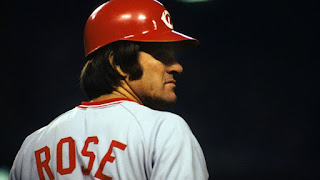Today we conclude with our previews of the college bowl games with a look at the Citrus Bowl that will be held in the Orlando Citrus Bowl Stadium on New Year’s Day. Kick off will be 1 p.m. There is really no great significance to this game considering both teams have three losses on the year, but the game features the Michigan Wolverines and the Florida Gators, and the Wolverines just happen to be my favourite team in College Football, so we’re going to talk about them.
Michigan, in Jim Harbaugh’s
first season as the head coach at Ann Arbor, are starting to climb out of the
seven years of mediocrity that has plagued the team since Lloyd Carr left at the
end of the 2007 season. In fact, following that season, the Wolverines met the Gators
in the Capital One Bowl on New Year’s Day in 2008, a 41-35 Michigan victory. It
was the last time the two teams met each other.
Since Carr’s departure, there’s
been nothing but turmoil in Michigan, save for the 2011 season, which was the
first season of Brady Hoke’s dubious four years at the helm for the Wolverines.
His predecessor, Rich Rodriguez, wasn’t given enough time to implement his
system for success and he was let go after only three seasons. The 2011
Wolverines, who finished 11-2, won the Sugar Bowl and beat Ohio State (the only
time since 2003 they’ve done so), can all be attributed to Rodriguez, even
though Hoke was the head coach. They were the players Rodriguez recruited that
led the team to the Sugar Bowl win and every year that Hoke was in charge,
Michigan got considerably worse.
Enter Harbaugh, who Michigan was
able to lure away from the NFL’s San Francisco 49ers for a nice chunk of
change, who promised a return of the Wolverines to the top of the Big Ten, but
made sure everyone knew it would take some time. Although, as it turns out, not
as long as may have been thought.
A 9-3 record is more than what
many experts predicted (most were saying 8-4) and if not for a bad snap on a
punt in the dying seconds against Michigan State, it would have been 10-2. Harbaugh has stamped his no-nonsense, tough defense,
run-the-ball offense trademark on the Wolverines and once he’s able to recruit
more of his type of players, expect Michigan to challenge for not only a Big
Ten championship, but the National Championship as well.
For 2015, the Wolverines were
led by quarterback, Jake Rudock, who transferred from Iowa after the 2014
season. Despite a rough first outing in a loss to Utah, Rudock bounced back and
had a solid year, passing for 2739 yards and 17 touchdowns, while running for
137 yards and four touchdowns. His favourite targets were tight end Jake Butt
(48 catches for 620 yards and three touchdowns), and receivers Amara Darboh (56
for 703 and five touchdowns) and Jehu Chesson (45 for 646 and eight
touchdowns.)
On the ground, De’Veon Smith had
the most carries and ended up with 644 yards and six TDs. But six other
players (including Rudock) also had more than a hundred yards.
Defensive back, Jabrill Peppers
was the spark plug on defense and special teams and even played some offense,
reminding many of former Wolverine DB and 1997 Heisman Trophy winner, Charles
Woodson. Peppers will be a junior next year and will be even better than he was
in 2015. Chances are if he’s too much better, he won’t have a senior season and
go right to the NFL in 2017.
All in all, it was a good
turnaround season for the Wolverines who finally look they are turning around
and heading in the right direction. While it would be optimistic to think that
they will be even better next year, I don’t see any reason why they won’t be,
although wins against arch-rivals Michigan State and Ohio State will still be
tough as both of those games will be on the road in 2016.
Expect the Wolverines to finish
their season strong with a win over Florida in the Citrus Bowl. Florida’s
offense has looked weak over the last several games but their defense is one of
the best. It should be a low-scoring game.
Prediction: Michigan-21, Florida-10
Follow us on Twitter at @topofthethird
Like us on Facebook
























